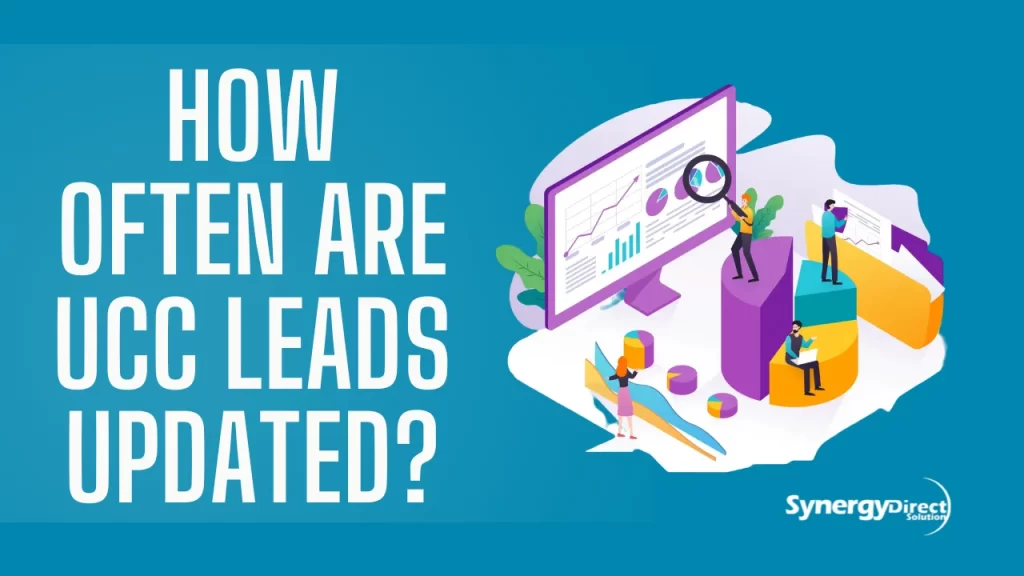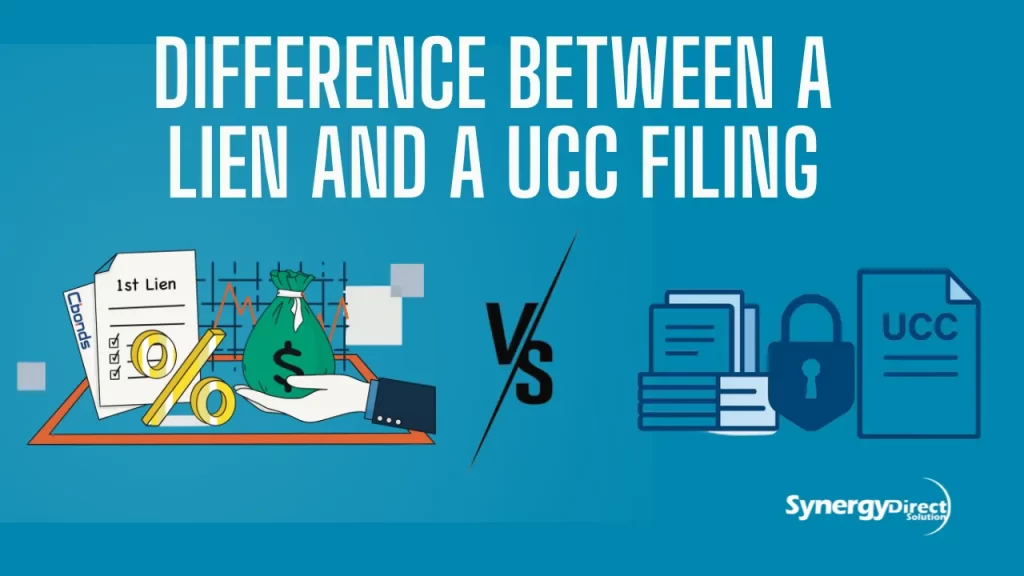How Often Are UCC Leads Updated? What You Should Know
UCC (Uniform Commercial Code) leads are valuable data sets derived from publicly filed financial statements that indicate a business’s borrowing activity, especially for secured loans. These leads provide critical information about companies seeking or receiving commercial loans, including the lender’s name, borrower details, collateral, and filing date. For lenders, equipment financiers, leasing companies, and B2B marketers, UCC leads are goldmines.
But just having access to UCC leads isn’t enough. One must know how often these leads are updated to maintain relevance and ensure timely follow-ups. This article explores everything you need to know about How Often UCC Leads Are Updated, how they are processed, and how to use them for maximum impact.

What Are UCC Leads and Why Are They Important?
UCC leads are based on filings made under Article 9 of the Uniform Commercial Code. When a lender secures a loan with business assets—like machinery, inventory, or receivables—they file a UCC-1 statement with the Secretary of State in the borrower’s state. This filing becomes public record.
These UCC-1 filings include:
- Business name and address
- Lender’s name
- Description of secured collateral
- Filing date and time
- Filing type (new, continuation, amendment)
For sales and marketing teams, these leads are incredibly useful. Why?
- Intent data: A company filing a UCC is actively seeking financing or growing.
- Targeted prospects: Leads are specific to industries that require heavy equipment, inventory, or capital.
- Verified data: UCC leads are based on legal filings, offering reliability over scraped or guessed data.
What Impacts Freshness (Filing Delays, Holidays, etc.)
The freshness of UCC leads can be significantly affected by several external and internal factors, which influence how quickly a newly filed UCC becomes available to end-users. One of the most common causes of delay is state-level processing time. Each state’s Secretary of State office operates on its own timeline for reviewing and posting filings, and while some update their databases daily, others may take several business days to do so.
Additionally, public holidays and weekends can create backlogs, further delaying the publication of new filings. During peak periods—like end-of-quarter or fiscal year closings—high filing volumes may overwhelm administrative systems, slowing down processing. Technical issues, such as system maintenance or server downtimes at the state level, can also temporarily halt updates.
Furthermore, manual data entry in some states introduces human error and lag, impacting how soon lead data is accurately recorded. UCC lead providers may also contribute to delays if they aggregate data in batches or only scrape public records at set intervals (e.g., weekly instead of daily). All these elements combined determine the overall “freshness” of a UCC lead, which in turn affects its usefulness in time-sensitive marketing and sales campaigns.
How Providers Update Their UCC Databases?
UCC lead providers play a crucial role in delivering up-to-date and accurate data to businesses that rely on these filings for lead generation and market intelligence. Updating their UCC databases is a complex process that combines automation, human oversight, and strategic scheduling. The goal is to ensure that newly filed Uniform Commercial Code (UCC) records are collected, verified, and formatted for end-users with minimal delay.
The process typically begins with data sourcing from official Secretary of State websites. Most providers use automated web scraping tools or API integrations to monitor public UCC filing records on a daily—or even hourly—basis, depending on the state and its data availability protocols. These tools are designed to extract data from online repositories as soon as new filings are posted. In states where online systems are not fully integrated or accessible, providers may rely on manual downloads, direct file requests, or third-party data brokers to obtain the filings.
Once the raw data is gathered, the next step involves data cleansing and normalization. UCC filings can vary widely in format across different states, making it necessary for providers to standardize the information for uniform presentation. This includes parsing out relevant fields such as debtor name, secured party, filing date, state, and collateral descriptions. Providers also perform duplicate checks and data validation routines to ensure accuracy and consistency.
After cleansing, the records are imported into the provider’s central database, where they are categorized, indexed, and made searchable for clients. Some platforms enrich the data further by adding company profiles, industry classifications, or contact information to enhance usability for sales and marketing teams.
Finally, providers may offer real-time alerts or daily reports to clients who want immediate access to newly added UCC leads. Many also use batch updates that occur nightly, weekly, or monthly depending on the provider’s capabilities and client preferences.
The speed and accuracy of this entire process can vary significantly from one provider to another. Some update their databases daily or even in real time, while others may only refresh their records on a weekly or bi-weekly basis. This makes it essential for businesses to evaluate how frequently a provider updates its UCC database when choosing a lead partner, as fresher data often translates to a stronger competitive advantage.
How to Ensure Your Leads Are Current
To ensure your UCC leads are current, it’s essential to partner with a reputable data provider that offers daily or real-time updates directly sourced from Secretary of State databases. Always verify how frequently your provider refreshes their database, as outdated records can lead to wasted outreach and missed sales opportunities.
Implementing automated alerts and CRM integrations can also help you monitor new filings and prioritize the freshest leads. Internally, you should categorize leads by age, giving higher priority to those filed within the last 7 to 14 days. Additionally, perform regular data audits to identify stale entries, update contact information, and validate lead accuracy against official sources. These steps help ensure your outreach remains timely, targeted, and effective in a competitive market.
State-by-State Update Frequency
The update frequency of UCC filings varies significantly across U.S. states due to differences in data processing systems, administrative capacity, and digital infrastructure. While some states provide daily updates, others only update their records on a weekly or bi-weekly basis, directly impacting the freshness of UCC leads available to marketers and lenders. Understanding these differences is crucial for businesses that rely on UCC data to make timely decisions.
States like California, Texas, and Florida typically offer daily updates due to their advanced digital platforms and high filing volumes, which necessitate frequent database refreshes. These states often integrate automated systems to handle UCC filings quickly, making them ideal for real-time lead acquisition. On the other hand, states like Alaska or Vermont may update less frequently—weekly or even bi-weekly—because of lower filing volume or more manual processes.
Some Secretary of State offices only push updates after internal reviews, meaning there’s often a 2-3 business day delay between the actual filing and public availability. Additionally, state holidays, server maintenance, or system outages can cause unexpected interruptions in the update cycle. Certain states may offer expedited services for same-day visibility, but that typically applies to filings—not to when the public data is released.
For lead buyers, understanding this variation is essential. If you’re targeting businesses in multiple regions, you may find that leads from one state are fresher and more actionable than those from another. To mitigate these inconsistencies, work with a UCC data provider that clearly communicates their state-by-state update schedule and offers filtering tools to sort leads based on freshness. This ensures your sales and marketing teams focus on the most recent and relevant data, maximizing efficiency.
What Is the Difference Between a Lien and a UCC Filing?
The terms lien and UCC filing are closely related but not identical—they serve different legal purposes and scopes within the realm of secured transactions. Understanding the distinction between the two is important for lenders, creditors, and businesses involved in financing and collateral agreements.
A lien is a broad legal claim or right against a property or asset, granted to a creditor to secure the payment of a debt or performance of an obligation. Liens can be voluntary (such as those created through a loan agreement) or involuntary (such as tax liens or judgment liens). They can apply to various types of assets, including real estate, vehicles, or business equipment. When a lien is in place, the creditor may have the right to seize or repossess the asset if the borrower defaults.
On the other hand, a UCC filing—specifically a UCC-1 Financing Statement—is a type of lien created under the Uniform Commercial Code (UCC) to notify the public that a creditor has a security interest in a debtor’s personal property, not real estate. UCC filings are commonly used in commercial lending, such as equipment financing, inventory loans, or accounts receivable financing. The filing is typically made with the Secretary of State and includes details about the debtor, secured party, and collateral.
In essence, a UCC filing is a formalized type of lien, but not all liens are UCC filings. For example, a mechanic’s lien on a property or a tax lien issued by the IRS does not fall under the UCC framework. UCC filings are limited to movable assets and personal property and are used to establish priority among creditors in case of borrower default or bankruptcy.

Conclusion
Understanding how often UCC leads are updated is crucial for maintaining a competitive edge in sales, lending, and marketing. Since update frequency varies by state and provider, businesses must evaluate their data sources carefully. Delays due to state processing times, holidays, or manual entry can affect lead freshness, directly impacting follow-up timing and campaign effectiveness. By partnering with a UCC data provider that offers real-time or daily updates and understanding the nuances of each state’s update schedule, businesses can ensure they are acting on the most current and actionable data. Staying informed about how UCC leads are updated empowers you to make faster, smarter outreach decisions and gain an edge in securing new opportunities.
FAQS
- Why is it important to understand how often UCC leads are updated?
Understanding the update frequency of UCC leads is essential because it directly affects the timeliness and relevance of your outreach efforts. If leads are outdated, businesses risk contacting prospects after competitors or when the opportunity is no longer active, reducing conversion rates and campaign success. - How do state-level differences impact UCC lead freshness?
State-level differences significantly influence how quickly UCC filings become publicly available. Some states update daily due to better digital infrastructure, while others may only refresh weekly or bi-weekly. These discrepancies affect how soon businesses can access and act on new leads, making state-by-state knowledge crucial. - What role do data providers play in ensuring lead accuracy and speed?
UCC data providers gather, clean, and deliver filing data from Secretary of State websites. Choosing a provider that offers real-time or daily updates is vital, as it ensures you’re working with the freshest and most actionable lead information. Providers also differ in their methods and update schedules, which businesses must consider. - How can businesses maintain an edge using UCC leads?
To maintain a competitive advantage, businesses should partner with a reliable UCC lead provider that offers fast updates and understands state-specific filing schedules. This helps ensure marketing and sales teams act promptly, increasing the chances of securing new deals ahead of competitors.
